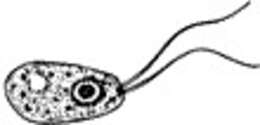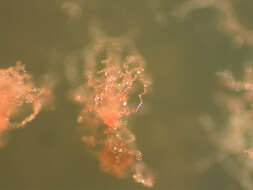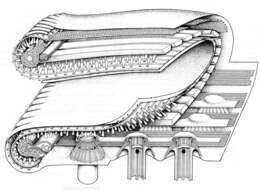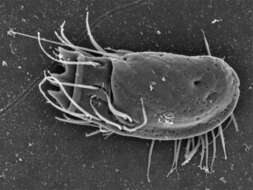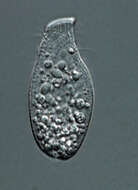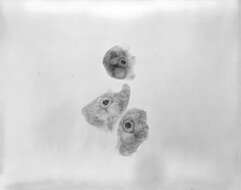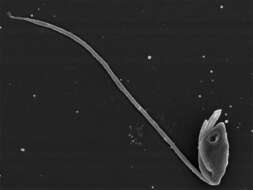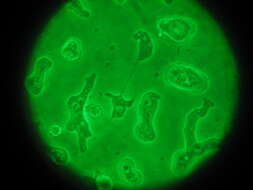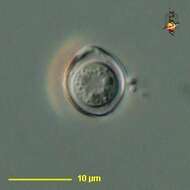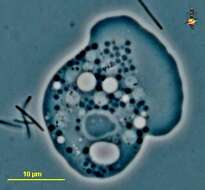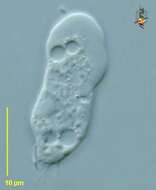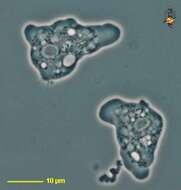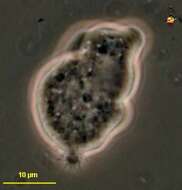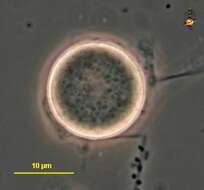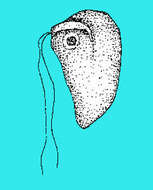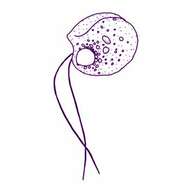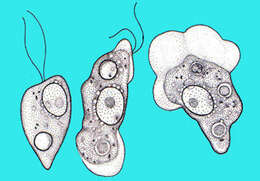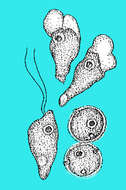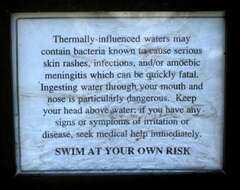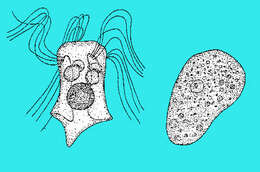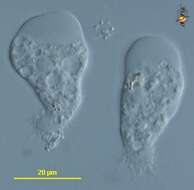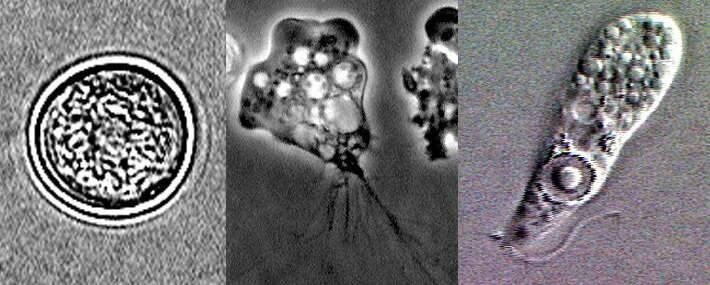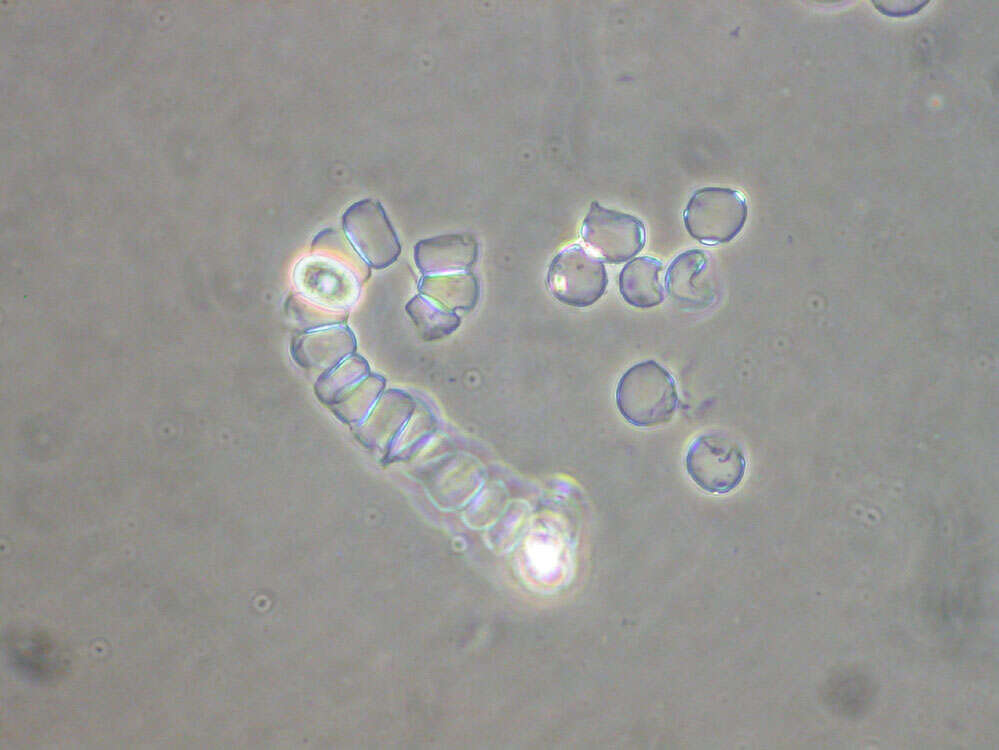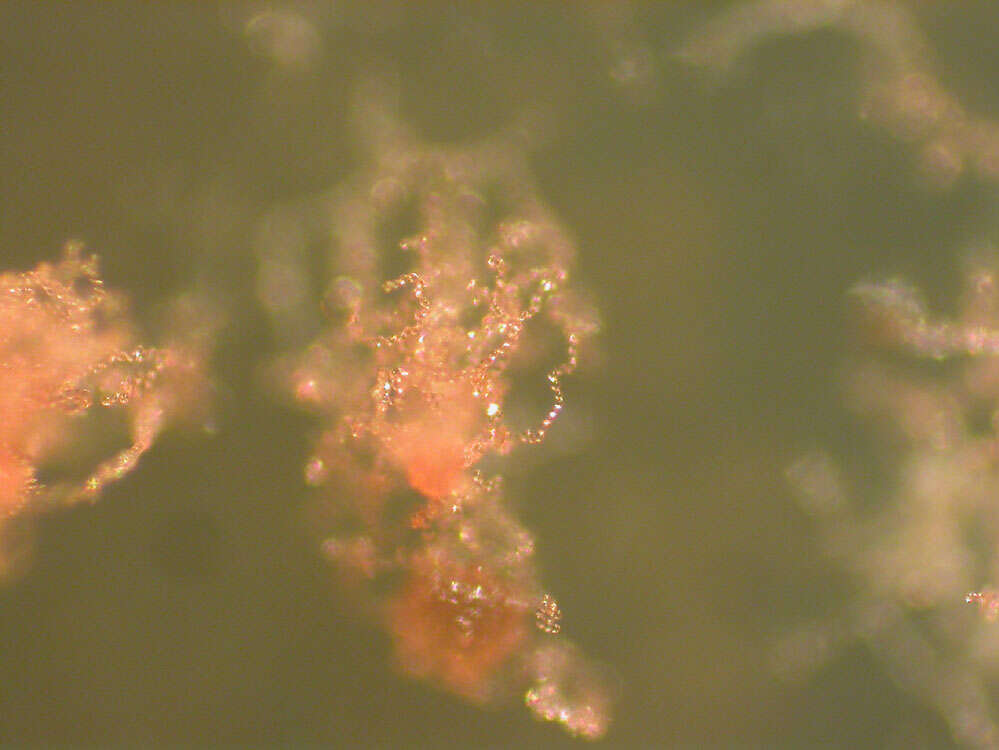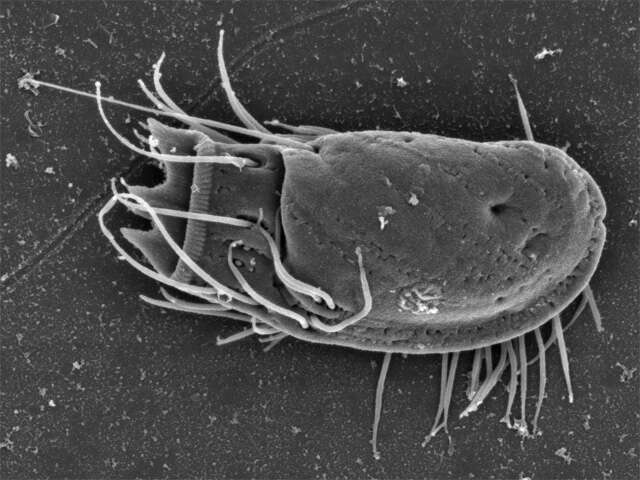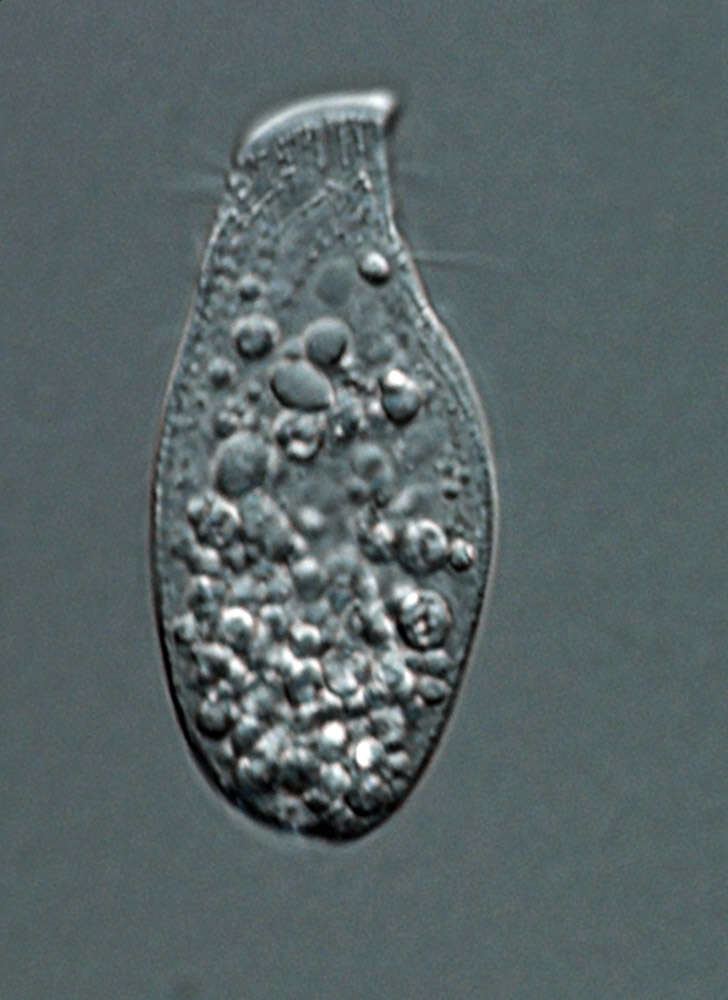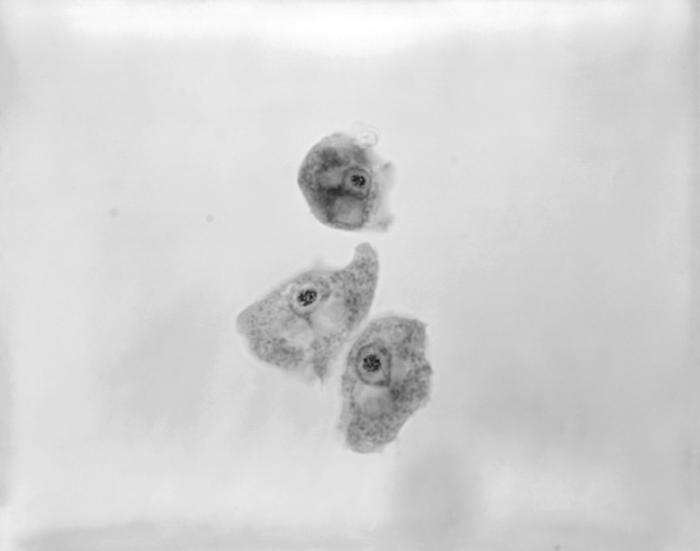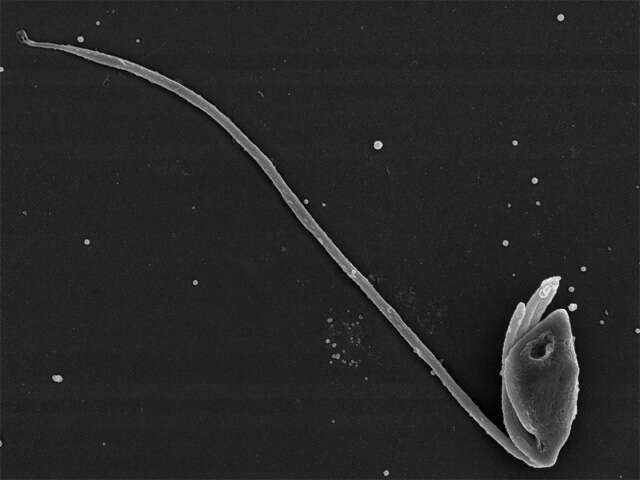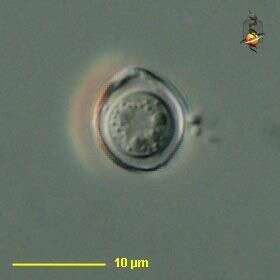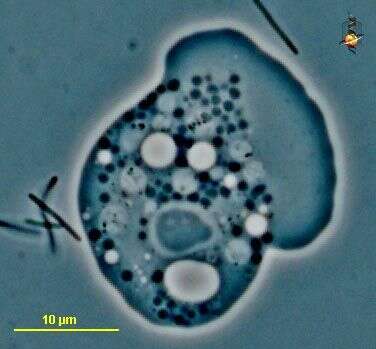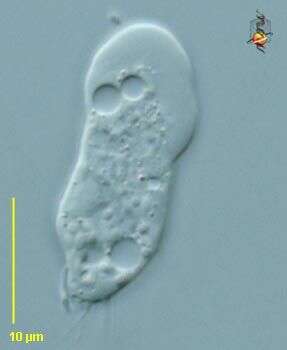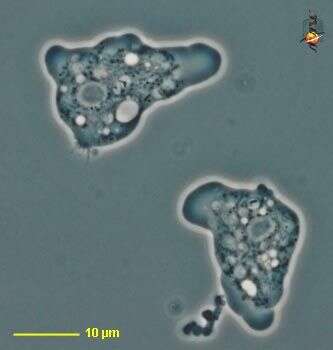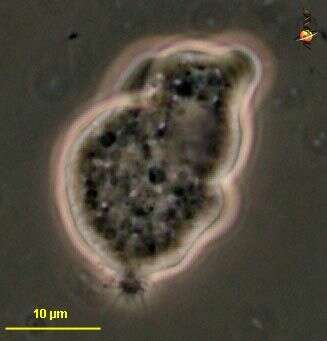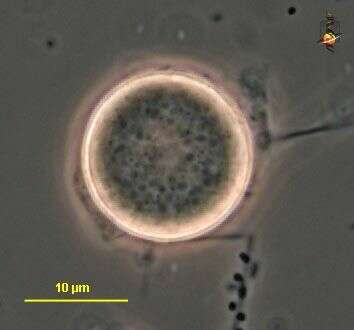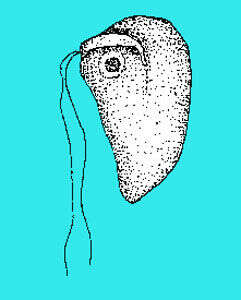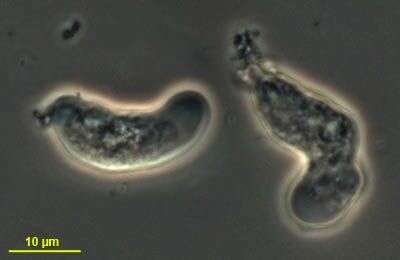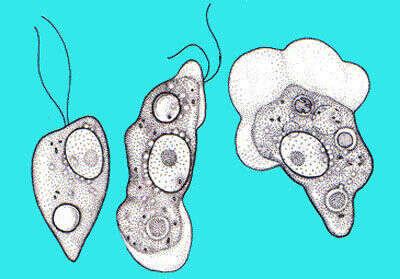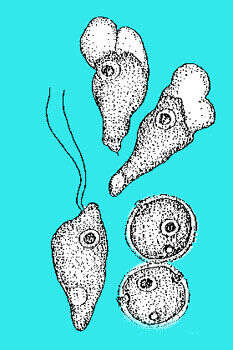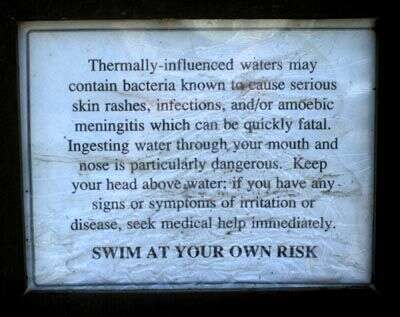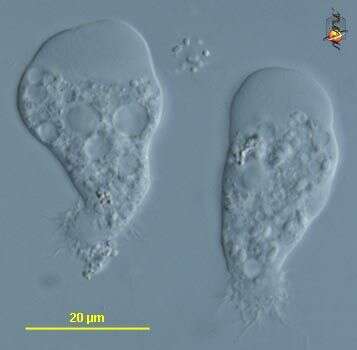-
Description: English: (Naegleria fowleri lifecycle stages. A: Cyst of N. fowleri in culture. Naegleria fowleri does not form cysts in human tissue. Cysts in the environment and culture are spherical, 7-15 µm in diameter and have a smooth, single-layered wall. Cyst) Français : Étapes du cycle de vie de Naegleria fowleri. A = Kyste de N. fowleri en culture (Naegleria fowleri ne forme pas de kystes dans les tissus humains). Les kystes dans l'environnement et la culture sont sphériques, de 7 à 15 µm de diamètre et ont une paroi lisse à une seule couche). Source:
http://www.dpd.cdc.gov/dpdx/HTML/ImageLibrary/FreeLivingAmebic_il.htm. Author: CDC.
-
-
This image was created by user Shirley Chio (SureLee) at Mushroom Observer, a source for mycological images.You can contact this user here. English | español | français | italiano | македонски | português | +/−
Wikimedia Commons
-
This image was created by user Copyright ©2008 Shirley at Mushroom Observer, a source for mycological images.You can contact this user here. English | español | français | italiano | македонски | português | +/−
Wikimedia Commons
-
Description: English: Line drawing of oral and somatic cytoskeletal elements of Stephanopogon apogon. Date: 8 April 2019. Source: Own work. Author:
Djpmapleferryman.
-
Description: Stephanopogon sp. / SEM:JEOL JSM-6330F. Date: 5 November 2007. Source: Own work. Author:
ja:User:NEON /
User:NEON_ja. Permission(
Reusing this file): : This file is licensed under the
Creative Commons Attribution-Share Alike 3.0 Unported license. :. You are free: to share – to copy, distribute and transmit the work to remix – to adapt the work Under the following conditions: attribution – You must give appropriate credit, provide a link to the license, and indicate if changes were made. You may do so in any reasonable manner, but not in any way that suggests the licensor endorses you or your use. share alike – If you remix, transform, or build upon the material, you must distribute your contributions under the
same or compatible license as the original. https://creativecommons.org/licenses/by-sa/3.0 CC BY-SA 3.0 Creative Commons Attribution-Share Alike 3.0 truetrue.
-
Description: English: Light microscope image of living Stephanopogon. Date: 25 July 2019. Source: Own work. Author:
Djpmapleferryman.
-
Description: English: This 1973 photomicrograph depicted three Naegleria gruberi free-living amoebae. Free-living amoebae belonging to the genera Acanthamoeba, Balamuthia, and Naegleria, are important causes of disease in humans and animals. Date: 1973. Source: CDC
CDC ID# 9863. Author: CDC/ Dr. George Healy ID# 9863. Permission(
Reusing this file): This image is in the public domain and thus free of any copyright restrictions. As a matter of courtesy we request that the content provider be credited and notified in any public or private usage of this image.
-
Description: Percolomonas sp. / SEM:JEOL JSM-6330F. Date: 5 November 2007. Source: Own work. Author:
ja:User:NEON /
User:NEON_ja. Permission(
Reusing this file): : This file is licensed under the
Creative Commons Attribution-Share Alike 3.0 Unported license. :. You are free: to share – to copy, distribute and transmit the work to remix – to adapt the work Under the following conditions: attribution – You must give appropriate credit, provide a link to the license, and indicate if changes were made. You may do so in any reasonable manner, but not in any way that suggests the licensor endorses you or your use. share alike – If you alter, transform, or build upon this work, you may distribute the resulting work only under the same or similar license to this one. https://creativecommons.org/licenses/by-sa/3.0 CC BY-SA 3.0 Creative Commons Attribution-Share Alike 3.0 truetrue.
-
Naegleria gruberi
-
Vahlkampfia (vall-camp-fee-a) (= Schizopyrenus - skitz-owe-pyre-een-us ?) a heterolobose amoeba, pseudopodia are produced in sudden bulges, and are lobose. Cyst with irregular outer wall. Differential interference contrast.
-
Vahlkampfia (vall-camp-fee-a) (= Schizopyrenus - skitz-owe-pyre-een-us ?) a heterolobose amoeba, pseudopodia are produced in sudden bulges, and are lobose. Large hyaline region. Also with posterior contractile vacuole, nucleus with nucleolus and various food vacuoles and inclusions. Usually with a small uroid giving rise to filaments, but this is not evident here. Phase contrast.
-
Vahlkampfia (vall-camp-fee-a) (= Schizopyrenus - skitz-owe-pyre-een-us ?) a heterolobose amoeba, pseudopodia are produced in sudden bulges, and are lobose. Large hyaline region. Also with posterior contractile vacuole, nucleus with nucleolus and various food vacuoles and inclusions. Also showing uroidal region (lower). Differential interference contrast.
-
Vahlkampfia (vall-camp-fee-a) (= Schizopyrenus - skitz-owe-pyre-een-us ?) a heterolobose amoeba, pseudopodia are produced in sudden bulges, and are lobose. Large hyaline regions. Also with posterior contractile vacuole, nucleus with nucleolus and various food vacuoles and inclusions. Usually with small uroids giving rise to filaments. Several cells. Phase contrast.
-
Heteramoeba (het-err-a-me-ba) a naked heterolobose amoeba, distinguished from other types of naked amoebae with lobose pseudopodia largely by ultrastructural features, but trophic heterolobose amoebae tend to form their pseudopodially suddenly rather than progressively. Phase contrast.
-
Heteramoeba (het-err-a-me-ba) a naked heterolobose amoeba, distinguished from other types of naked amoebae with lobose pseudopodia largely by ultrastructural features, but trophic heterolobose amoebae tend to form their pseudopodially suddenly rather than progressively. This is a cyst. Phase contrast.
-
-

Heteramoeba clara Droop, 1962. The flagellate stage can form a more or less spherical cell up to 30 microns in diameter. There are two equal nearly equal flagella, 60 microns long, held, as far as one can see, tangentially when the organism is moving, they cause the cell to rotate about the axis of forward motion with a period varying from about a second in the larger, to a quarter of a second in the smaller individuals. There is deep cytostome, a furrow lying between the main body and a curved enfolding collar: In the globular mature cell the collar forms an incomplete circle around what appears to be the anterior pole, with the flagellar insertion at the outer edge of one end of it, but it is clear from smaller pyriform cells that the true orientation of collar and cytostome is lateral. The cytoplasm is clear in the absence of ingested food: there are no contractile vacuoles and no stigma or chloroplasts, but the large spherical, empty nucleus is conspicuous in the anterior part of the cell. It lies very close to the flagellar insertion and is surrounded mostly towards the rear, by a layer of small highly refractive inclusions. The cell membrane is firm, but can easily be deformed when food taken in, the cytostomal collar especially is so elastic as to enable the flagellate to surround and engulf prey twice its riormal size.
-
-
-
-
Some amoebae represent a threat to human health - they are the cause of an infection of the brain called amebic meningitis. Most of the forms which cause problems are known to favor warm waters - and the heated waters of Yellowstone present a heightened risk of infection - hence these informative signs to alert the public to the risks they take should they chose to swim in these waters.
-
-
Willaertia (will-ert-ee-as), a heterolobose amoeba. The heterolobose amoebae usually move with the pseudopodia forming as sudden bulges. A large anterior hyaline zone and a posterior uroid evident. Differential interference contrast.


